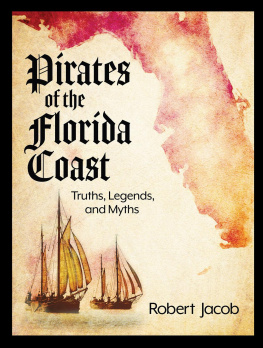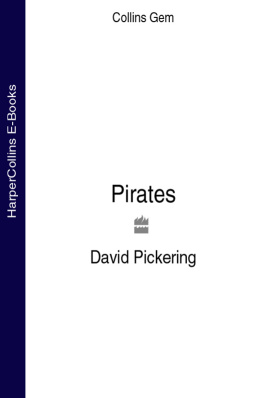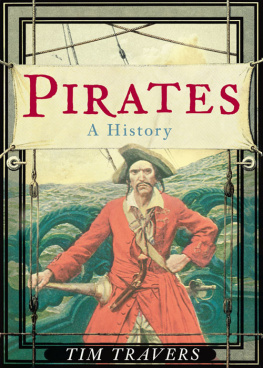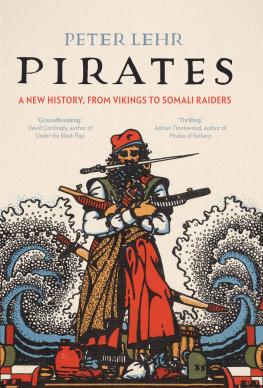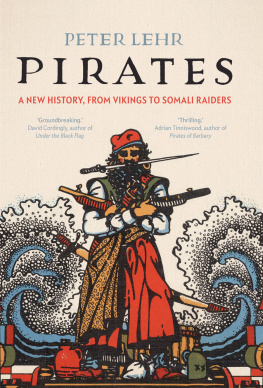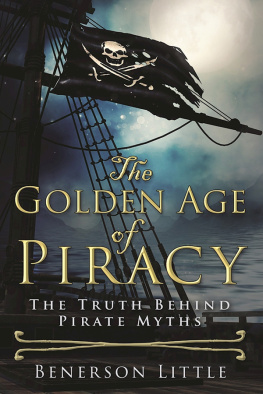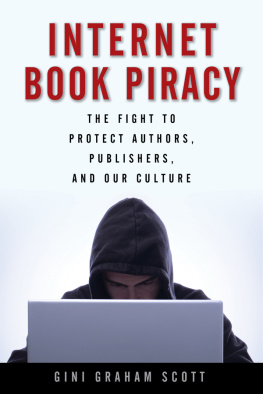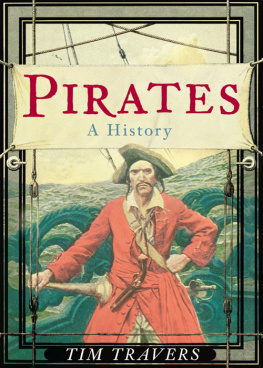The Golden Age of Piracy
The Golden Age of Piracy
THE RISE, FALL, AND ENDURING POPULARITY OF PIRATES
Edited by David Head
The University of Georgia Press Athens
2018 by the University of Georgia Press
Athens, Georgia 30602
www.ugapress.org
All rights reserved
Set in Adobe Caslon Pro
Most University of Georgia Press titles are available from popular e-book vendors.
Printed digitally
Library of Congress Cataloging-in-Publication Data
Names: Head, David, (Historian), editor.
Title: The golden age of piracy : the rise, fall, and enduring popularity of pirates / edited by David Head.
Description: Athens : The University of Georgia Press, 2018. | Includes bibliographical references and index.
Identifiers: LCCN 2017052790 | ISBN 9780820353265 (hardback : alk. paper) | ISBN 9780820353258 (pbk. : alk. paper) | ISBN 9780820353272 (ebook)
Subjects: LCSH: PiratesHistory17th century. | PiratesHistory18th century. | PiracyAtlantic Ocean RegionHistory. | PiracyCaribbean AreaHistory. | Atlantic Ocean RegionHistory17th century. | Atlantic Ocean RegionHistory18th century. | Caribbean AreaHistory17th century. | Caribbean AreaHistory18th century.
Classification: LCC G 535 . G 54 2018 | DDC 910.4/5dc23 LC record available at https://lccn.loc.gov/2017052790
CONTENTS
David Head
Carla Gardina Pestana
John A. Coakley
Kevin P. McDonald
Douglas R. Burgess
David Wilson
Guy Chet
Virginia W. Lunsford
Peter T. Leeson
Margarette Lincoln
Carolyn Eastman
Matthew Taylor Raffety
Adam Jortner
David Head
ACKNOWLEDGMENTS
I would like to thank the contributors, whose hard work, professionalism, and erudition have made the volume possible. They turned in outstanding scholarship, bore my edits patiently, and tolerated my taskmaster dedication to deadlines without mutiny or even demanding an increase to the rum ration. Im honored to have worked with them. Ive enjoyed the support of colleagues at Spring Hill College and the University of Central Florida. In particular, UCF MA student Gramond McPherson served as research assistant and wrangled the notes into shape. Claire Cage, Alan Shane Dillingham, and Timothy Lombardo provided much needed feedback at an early stage. Finally, I want to thank Walter Biggins and the team at the University of Georgia Press for launching the project and carrying it through to the end. Its been a pleasure, once more, to work together.
Portions of two chapters appeared previously in print, and on behalf of the authors I would like to thank the following presses for permission to use that work here: New York University Press for Carolyn Eastman, Blood and Lust: Masculinity and Sexuality in Illustrated Print Portrayals of Early Pirates of the Caribbean, in New Men: Manliness in Early America, ed. Thomas A. Foster (2011); and University of Massachusetts Press for Guy Chet, The Ocean Is a Wilderness: Atlantic Piracy and the Limits of State Authority, 16881856 (2014).
While the project was underway, my family added a new member to our crew, as my wife, Andrea, and I welcomed a wonderful little girl, Camila. She already has her eye on her sisters pirate outfit OK , I have my eye on it for her. Ahoy, little matey!
David Head
Introduction
David Head
When my daughter Carolina was nine months old, she received a navy blue onesie that proclaimed her Captain of the Pirate Ship! It had a picture of a large vessel, a three-master, with the various parts labeled, including an ample space in the hold for treasure. Ahoy Little Matey! the bottom of the shirt beckoned. It was cute. My little pirate. Adorable.
But why isnt dressing up a baby like a pirate something awfulan act of child abuse even? Pirates were thieves and murderers. They were rapists. They enjoyed torture. They were, to use the technical term, bad guys.
Looking through my daughters dresser, I see lots of outfits with kitties and puppies, sleepy owls and fun-loving butterflies, and oh so many princessesbut no criminals. Somehow, though, pirates are just fine for kids, like a cuddly cartoon character.
The reason is obvious. Pirates are cool. Sure, adults know they may have been rough around the edges, but that just makes them lovable rogues. Pirates lived free, challenged authority, made their own rules, and drank rum all day and all night under a coconut tree on a white sandy beach by an azure sea. Popular culture tells us so.
Pirates are beloved figures and have been for a long time. The first installment of the Pirates of the Caribbean movies, currently the flagship of pirate celebrity, debuted in 2003, and the franchise now numbers five films with no sign of slowing down. Pirates of the Caribbean the movie was based on Pirates of the Caribbean the ride, which opened at Disneyland in 1967. Walt seems to have been a pirate enthusiast. His 1950 film version of Treasure Island solidified as many images of pirates as the original novel. Its Long John Silver, played by British actor Robert Newton with a penchant for growling r sounds, fixed how we hear pirates talk: Arrrr! It might be tempting to say Treasure Island the book started the fictional fascination with pirates, but
Though pirates were stylized over the years, the fascination with them grows out of the fact that they were real. Pirates really were dangerous men (and a few dangerous women) who sailed the seas in search of plunder. Pirates really were active in the Caribbean, its islands and adjoining seas, in the sixteenth, seventeenth, and eighteenth centuries. Pirates really did prey on the lucrative trade of Europes colonizing powers. They may not have buried treasure, jeered a victim walking the plank, or found themselves cursed by Aztec gold, but pirates were a serious problem in the colonial Caribbean. People lost their lives to pirates. People lost their lives as pirates. Anyone who worked or lived by the waters of the early Atlantic world had to confront, as surely as they faced the winds and waves, the danger of pirates.
This volume investigates the real pirates of history and the history of pirates in popular culture. It examines the pirates who accompanied European exploration, empire making, and nation building from the sixteenth century into the nineteenth. It also analyzes how pirates were interpreted by general audiences in the days when pirates were active and how pirates have been remembered in times since. The essays that follow offer a broad picture of piracy. They look at the geopolitical factors that gave rise to piracy, how piracy changed over time, how and why piracy diminished, and what larger lessons about crime and public policy today can be learned from studying pirates of the past. The essays also offer historical context for pirate popular culture. While pirates have long been fashionable, they have played different cultural roles at different times. Seemingly timeless, pirate tales have a history too.
Pirates have probably always existed and probably always will. Homer, Aristotle, and Thucydides wrote about pirates in the ancient world. Today, the International Chamber of Commerce maintains a Piracy Report website (https://icc-ccs.org) where you can find information on the latest incidents of piracy around the world complete with a Google map. Pirates have plundered across the globe. Europe, Africa, the Americas, Asiaall have witnessed piracy at one time or another. No sea has been immune.
This volume has a more specific focus: the so-called golden age of piracy in the Caribbean. Scholars have defined the Golden Age in various ways, sometimes narrowly to indicate only a surge of piracy from 1716 to 1726, at other times more broadly to include the buccaneers of the seventeenth century or to bring in the Elizabethan Sea Dogs of the sixteenth century. In individual chapters, authors advance their periodization as they see fit. Taken as a whole, the work embraces an expansive definition. The essays begin with the origins of Caribbean piracy in the sixteenth century as Spains enemies attempted to blast their way into the New World that Spain claimed as its own exclusive possession. They continue with the exploits of the buccaneers and famous captains such as Henry Morgan in the seventeenth century that culminated in Spain recognizing the legitimacy of foreign settlement by the 1690s. The work then moves through the ensuing dispersal of the buccaneers from their perch in the Caribbean in the late seventeenth and early eighteenth century and discusses the notorious 1710s and 1720s, the days of Blackbeard and Bartholomew Black Bart Roberts, of Anne Bonny and Mary Read. The work further expands the chronology of the Golden Age into the nineteenth century to investigate the timing of piracys decline and how the popular culture of piracy changed over time. Geographically, the essays are less diffuse. The primary site of action is the Caribbean. Still, the oceans of the world connect and pirates sailed where the winds and currents took them, spilling over into the larger Atlantic Ocean, even around Africa to the Indian Ocean as well. A more global approach over a larger chronology might be possible, but the Golden Age pirates are worth discussing on their own.
Next page


